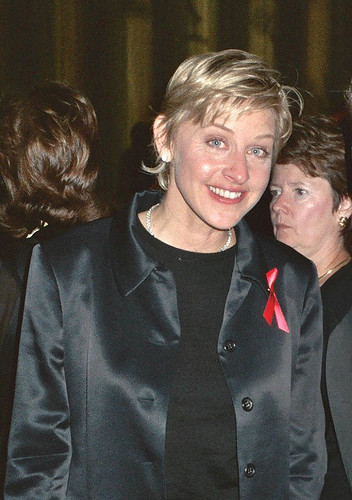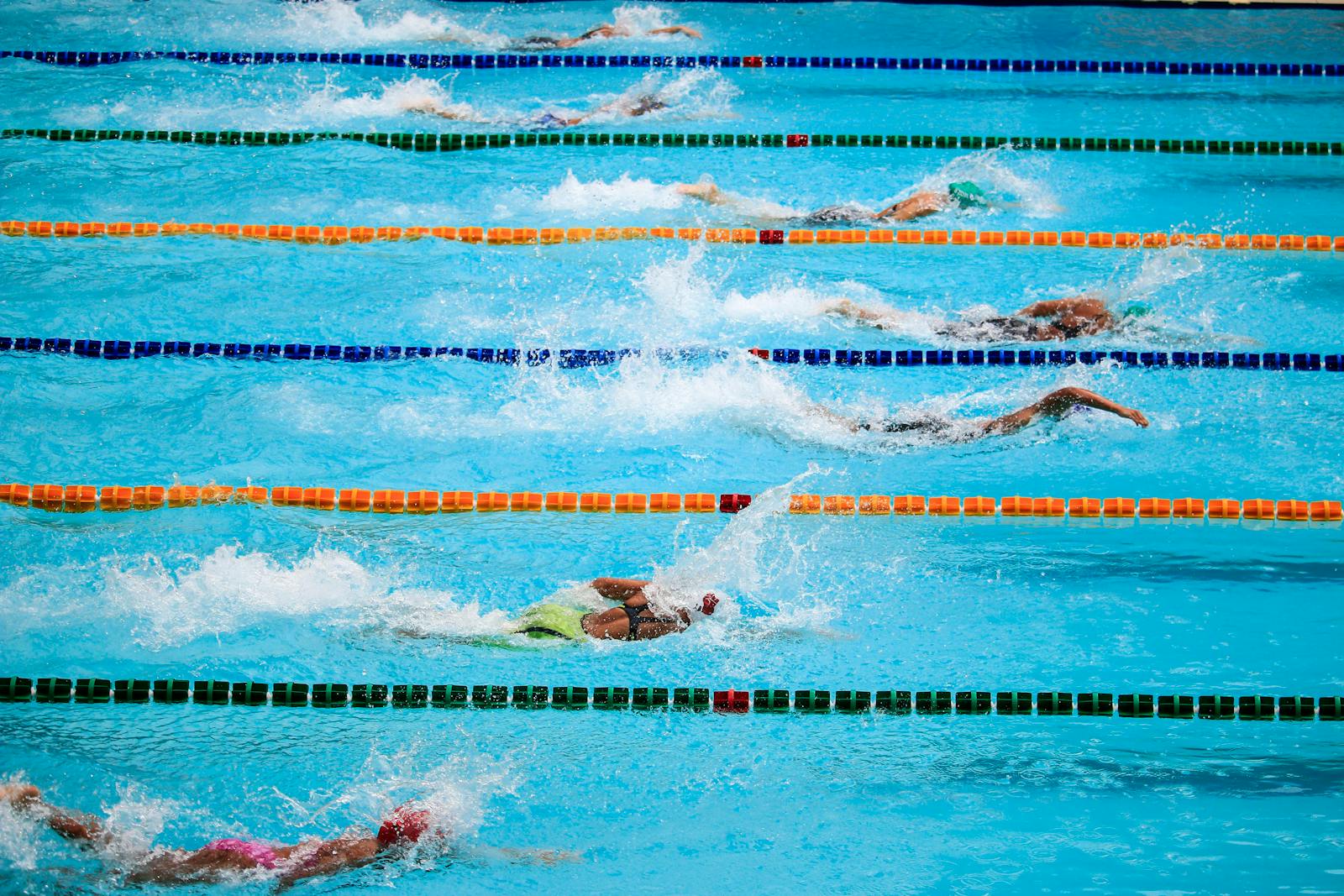
The world of elite sports, a realm traditionally defined by clear categories and rigid standards, finds itself at a pivotal moment of profound reevaluation. At the heart of this ongoing transformation is the deeply complex and often contentious debate surrounding the inclusion of transgender athletes, particularly trans women, in women’s competitive categories.
This discourse has been ignited with particular intensity by the case of Lia Thomas, a transgender swimmer whose remarkable achievements in collegiate swimming have placed her at the very epicenter of a global conversation on fairness, identity, and the future of sport. Her journey, marked by both triumph and adversity, encapsulates the multifaceted challenges faced by sports governing bodies as they strive to balance inclusivity with the fundamental principle of fair competition.
Recently, a significant legal decision has once again brought Thomas’s situation, and by extension, the broader issue, into sharp focus. This ruling not only impacts her personal aspirations but also sends reverberations across the athletic community, forcing a fresh examination of existing policies and the underlying scientific and ethical considerations that shape them.
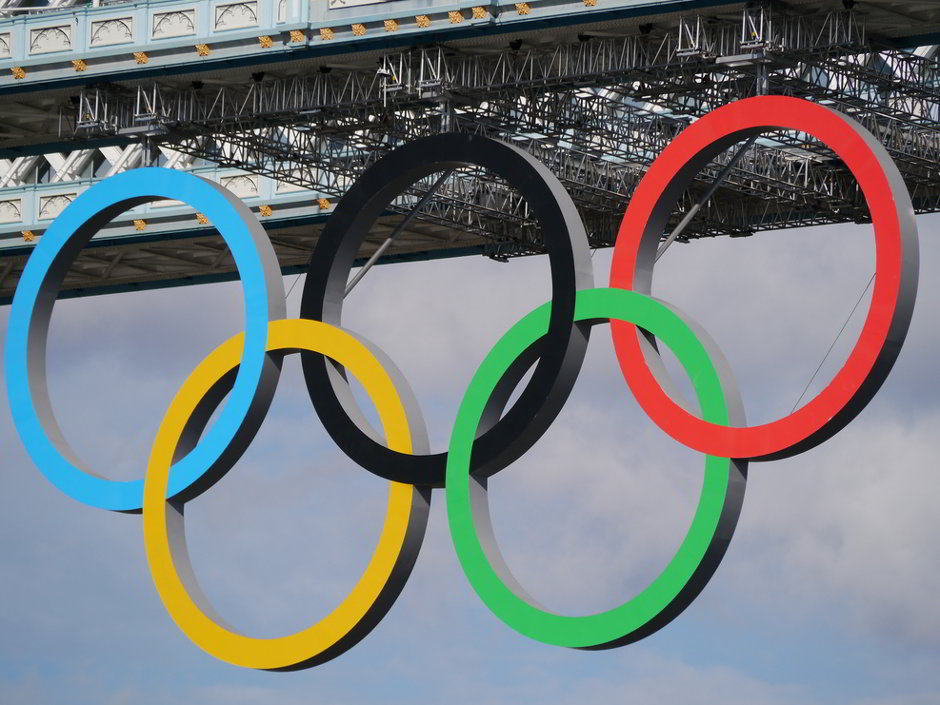
1. **Lia Thomas’s Olympic Dreams Dashed by CAS Ruling**
Transgender swimmer Lia Thomas, whose athletic journey has been closely watched by proponents and critics alike, recently faced a significant legal setback that effectively extinguishes her hopes of competing in the Summer Olympics. On a Wednesday, a three-judge panel on the Court of Arbitration for Sport (CAS) dismissed her request for arbitration with World Aquatics, the global governing body for swimming.
This ruling comes as a crushing blow to Thomas, who openly shared in a 2022 interview with ABC News’ “Good Morning America” that one of her lifelong goals had been to compete in the Olympics. With the CAS decision firmly in place, she is now barred from participating in the upcoming qualifying trials necessary to secure a spot in the prestigious Paris Games, closing a significant chapter in her competitive swimming career.

2. **The Court of Arbitration for Sport’s Dismissal and Reasoning**
The dismissal of Lia Thomas’s legal challenge by the Court of Arbitration for Sport was not, as some might assume, a direct judgment on the validity of World Aquatics’ controversial gender inclusion policy itself. Instead, the CAS panel’s decision hinged on a crucial procedural point: they concluded that Thomas “lacks standing to challenge the policy and the operational requirements in the framework of the present proceeding.
In a detailed 24-page verdict, the CAS elaborated that Thomas was “simply not entitled to engage with eligibility to compete in WA competitions” because she was no longer a member of USA Swimming, nor was she actively seeking to compete in a World Aquatics competition. Consequently, the court determined she was “not sufficiently affected” by the rules to possess the legal standing required to challenge them effectively, underscoring the legal technicality that underpinned the ruling.

3. **World Aquatics’ Stance on Gender Inclusion Policy**
At the core of the controversy surrounding Lia Thomas’s eligibility are the stringent rules established by World Aquatics (WA) in 2022. These regulations, ratified several months after Thomas’s historic NCAA win, explicitly ban transgender women who have undergone male puberty from competing in women’s elite races. The policy aims to protect the integrity of women’s sport, acknowledging potential physiological advantages that may persist after puberty.
Concurrently, World Aquatics introduced an “open” category, designed to provide a competitive pathway for transgender athletes. Following the CAS decision, World Aquatics publicly welcomed the ruling, calling it “a major step forward in our efforts to protect women’s sport.” They reiterated their commitment to “fostering an environment that promotes fairness, respect, and equal opportunities for athletes of all genders,” while reaffirming confidence that their gender inclusion policy represents “a fair approach” for all stakeholders.

4. **Lia Thomas’s Historic NCAA Victory and Its Fallout**
Before the current legal battle, Lia Thomas made national headlines in March 2022, becoming the first trans woman to win an NCAA swimming championship. As a student at the University of Pennsylvania, she secured the women’s 500-yard freestyle event title, a victory that transcended the pool and catapulted her into the spotlight of a heated global debate.
Her success drew unprecedented international media attention, making her a focal point for discussions on transgender participation in women’s sports. Unfortunately, this prominence also made her a frequent target of right-wing media outlets, and she found herself at the receiving end of intense criticism and scrutiny, despite her consistent focus on her performance.

5. **Reactions from Advocates and Critics: A Divided Landscape**
The Court of Arbitration for Sport’s decision has elicited a wide spectrum of reactions, vividly illustrating the deeply polarized nature of the debate. Lia Thomas, through her attorney, expressed profound disappointment, stating, “Blanket bans preventing trans women from competing are discriminatory and deprive us of valuable athletic opportunities that are central to our identities.” She further urged the ruling to be seen as “a call to action to all trans women athletes to continue to fight for our dignity and human rights.”
Conversely, figures like former University of Kentucky swimmer Riley Gaines, a vocal critic of Thomas, celebrated the legal defeat, declaring it “a victory for women and girls everywhere.” On the other side of the spectrum, Athlete Ally, a nonprofit advocating for LGBTQ+ inclusion in sports, condemned the ruling. Hudson Taylor, their founder, stated, “By dismissing Lia Thomas’ legal challenge against World Aquatics, the CAS has denied her fundamental right to access an effective remedy for acts that violate her human rights. This is a sad day for sports and for anyone who believes that trans athletes should have the opportunity for their experiences of discrimination to be heard and adjudicated like everyone else.”
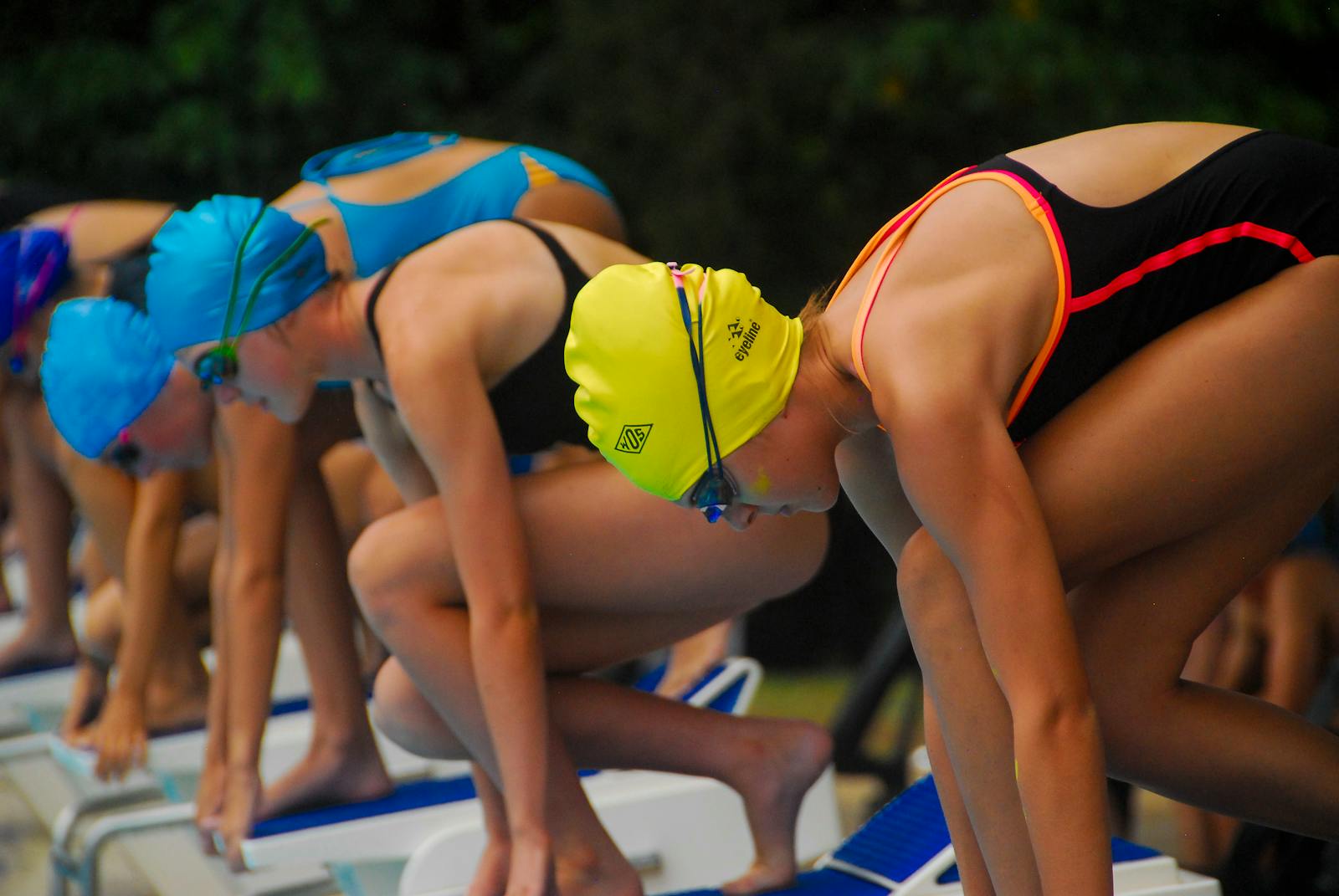
6. **The Broader Implications for Elite Transgender Swimmers**
The CAS ruling against Lia Thomas carries significant weight, setting a precedent that could impact the competitive futures of other transgender women in elite aquatics. The policy dictating that male-to-female transgender athletes are eligible only if they transition before the age of 12 or before reaching stage 2 of the puberty Tanner Stages effectively bars many from the highest echelons of women’s swimming.
This case highlights the complex nature of inclusivity in sports and the ongoing debate over fairness and eligibility, particularly for athletes who have undergone male puberty. While Thomas’s personal Olympic aspirations are now dashed, the wider implications of this decision will continue to shape discussions and policies for transgender athletes seeking to compete at the elite level globally.

7. **US Masters Swimming and the Texas Attorney General’s Lawsuit**
Adding another layer to the intricate tapestry of transgender athlete controversies, Texas Attorney General Ken Paxton recently announced a lawsuit against U.S. Masters Swimming (USMS), a prominent competitive swimming membership organization for adults. This legal action stems from a specific event in San Antonio where a biological male transgender athlete, 47-year-old Ana Caldas, secured five women’s gold medals in her age category.
Paxton’s statement alleges USMS engaged in “false, deceptive, and misleading practices by allowing men to compete in women’s events,” claiming the organization “has cowed to radical activists pushing gender warfare.” USMS, for its part, has stated it is cooperating with an investigation by the Texas Office of the Attorney General, and has implemented an interim eligibility policy aligning with World Aquatics rules, clarifying that under their current policy, trans women are not eligible for records, Top 10 times, or awards in the women’s category at USMS-sanctioned events.

8. **The Historical Evolution of Transgender Athlete Policies: From IOC Mandates to Flexible Frameworks**
The ongoing debate surrounding transgender athletes in elite sports is not new; it is a culmination of decades of evolving policies by major governing bodies. The International Olympic Committee (IOC), for instance, first began allowing transgender athletes to compete in 2004. Initially, these rules were highly restrictive, requiring athletes to legally change their gender and undergo genital surgery, a stance that in hindsight appears to have been based on flawed assumptions about the origins of competitive advantage.
Over time, understanding and policies began to shift. The NCAA, six years later, took a different approach, allowing trans women to compete on collegiate women’s teams after one year of testosterone suppression. This rule was developed after extensive consultation with students, medical experts, and the LGBTQ+ community. Following the NCAA’s lead, the IOC itself adopted similar rules in 2015, dropping the surgical requirement and instead focusing on a testosterone threshold, which was set above the typical range for cisgender women but below that for cisgender men.
Most recently, in November, the IOC revised its policies again, moving away from a single set of standard rules for all sports. Instead, it introduced a “framework” built around ten guiding principles, including “inclusion,” “prevention of harm,” and “non-discrimination.” This framework directs each Olympic sport’s governing body to craft its own rules based on these principles, emphasizing that there should be “no presumption of advantage” from transgender status and that any restrictions must be supported by “robust and peer-reviewed research.
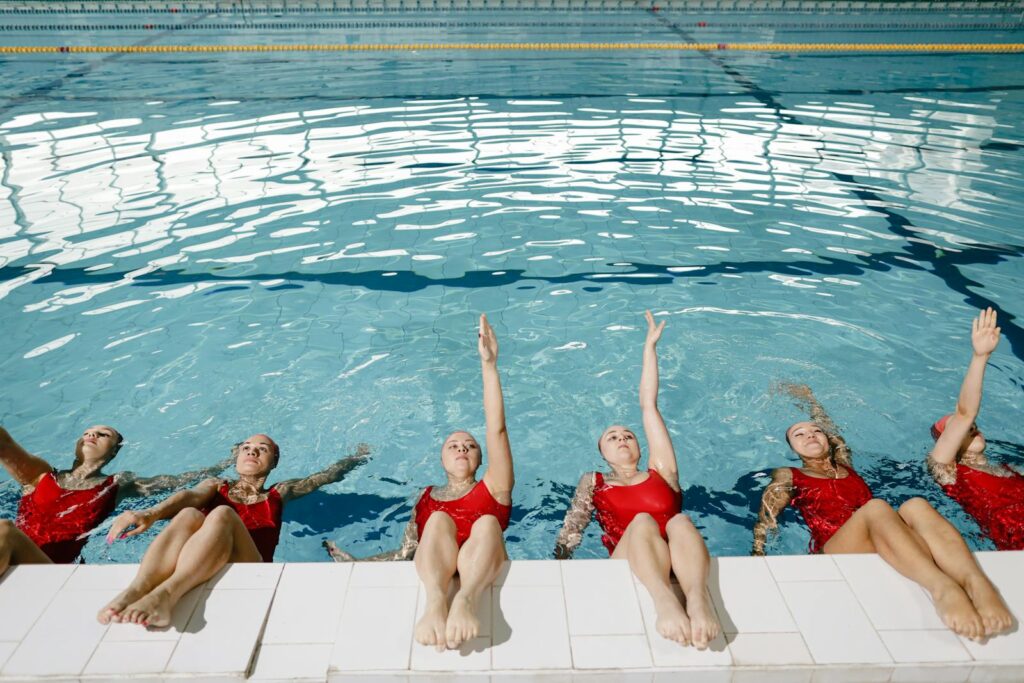
9. **Unpacking the Science: Testosterone, Puberty, and Athletic Advantage**
Central to the discourse on transgender athletic inclusion is the nuanced scientific debate surrounding testosterone and its impact on performance. It is generally accepted that individuals who have gone through testosterone-driven puberty often possess considerable physical advantages over elite female athletes. These advantages include, on average, greater cardiovascular capacity, increased muscle mass, higher tendon mechanical strength, denser bones, and tend to be stronger and taller with longer wingspans.
In many timed races, men are typically ten to twelve percent faster than women, illustrating a significant performance gap. For example, the Olympic track champion Allyson Felix’s lifetime best in the four hundred meters, 49.26 seconds, was bettered by men and boys more than fifteen thousand times in 2017 alone. However, the exact extent to which hormone-replacement therapy (HRT) mitigates these advantages remains a subject of intense discussion and ongoing research.
As Lia Thomas underwent HRT, she noted significant changes in her own body: her muscles softened, fat redistributed, and she felt a loss of aerobic capacity, which corresponded with her times in the pool rising. While HRT may reduce some physical differences, it might not fully counteract all competitive advantages gained during male puberty, such as differences in lean body mass or grip strength. Furthermore, the relationship between naturally occurring testosterone levels and athletic performance is complex, with researchers noting that bodies produce differing levels and have varying abilities to utilize the hormone, making a definitive causal link difficult to establish.
Joanna Harper, a sports scientist and nationally ranked master’s runner, contributed significant early research to this area. After she began HRT in 2004 and started competing as a woman, she observed her 10,000-meter time increasing by a full five minutes in less than a year. Her study, published in 2015, compared the race times of eight competitive transgender female runners before and after transition, suggesting that post-HRT, these women appeared to have no significant advantage over cisgender long-distance runners, at least in terms of their age-grade performance. However, critics like sociologists Katrina Karkazis and Rebecca M. Jordan-Young have disputed the idea that “testosterone is the miracle molecule of athleticism,” emphasizing that different sports require different skills and that athleticism itself is a broad term.
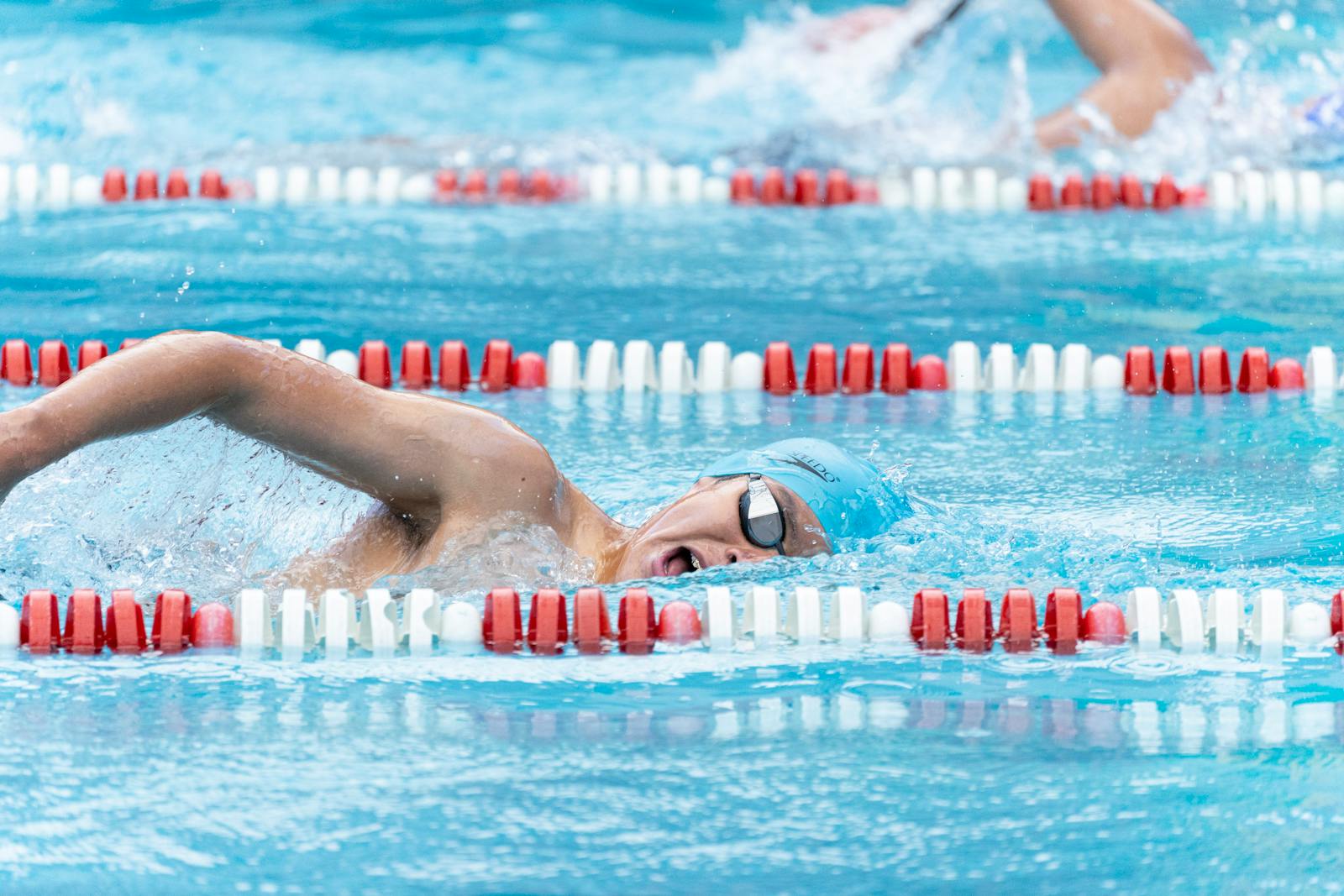
10. **Voices from the Pool Deck: Cisgender Athletes’ Concerns on Fair Play**
The inclusion of transgender women in women’s sports has brought forward powerful voices from cisgender female athletes who express concerns about fairness and the integrity of their competitive categories. Riley Gaines, a former University of Kentucky swimmer, has been a vocal critic of Lia Thomas’s participation and celebrated the recent CAS ruling as “a victory for women and girls everywhere.” Her perspective underscores a widely held sentiment among some athletes that biological differences are paramount for fair competition.
This sentiment resonates deeply within events like those organized by U.S. Masters Swimming (USMS). Wendy Enderle, a long-time swimmer from Louisiana, recounted feeling “betrayed” and “shocked” upon learning that Ana Caldas, who dominated five women’s gold medals in her age category in San Antonio, was a transgender athlete. Enderle, who had noticed Caldas’s muscles and height but assumed she was female, expressed her concern and anger, stating, “It makes me concerned, it makes me mad.”
Similarly, Angie Griffin, another USMS swimmer who competed against Caldas, articulated her frustration in a formal letter of complaint to USMS. Griffin felt the “integrity of individual competition had been compromised” and questioned why USMS did not follow the same competitive standards as the NCAA and international bodies. She emphasized, “I paid my entry fees, airfare, and hotel, trusting I’d be competing in a women’s division defined by biological sex. I deserved to know the truth before stepping onto the blocks.” These firsthand accounts highlight the profound emotional and competitive impact on cisgender athletes navigating these evolving policies.
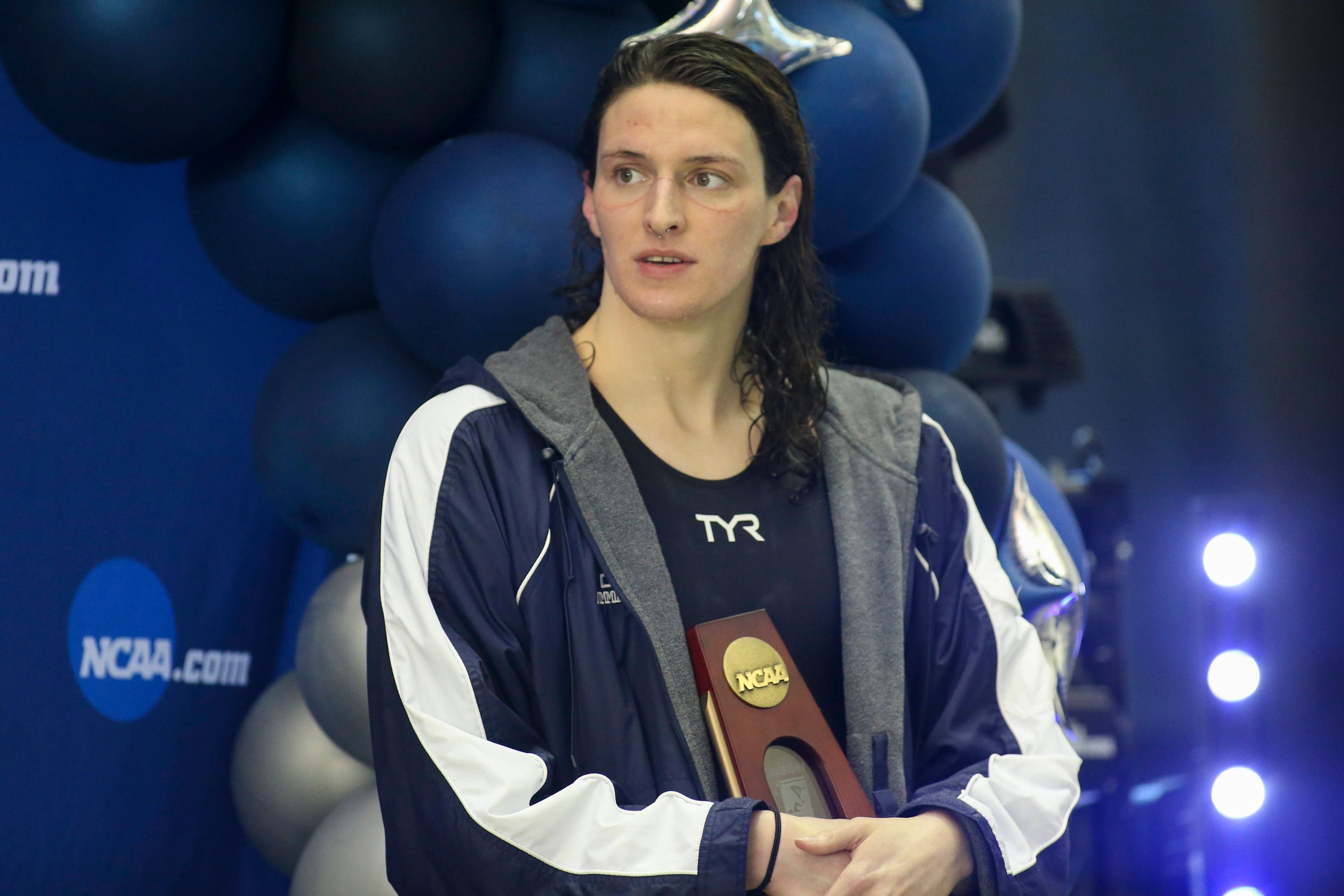
11. **Beyond Thomas: Pioneering Transgender Athletes in Elite Competition**
While Lia Thomas’s case has garnered immense media attention, she is by no means the first transgender athlete to navigate the complexities of elite sports. The history of transgender participation includes pioneers who challenged boundaries decades ago. Renée Richards, a professional tennis player, famously faced similar struggles in the 1970s but was eventually allowed to compete after her transition in 1975, going on to win the 35 and over singles in the 1980s.
The 2020 Tokyo Games marked a significant milestone as the first time openly transgender athletes could perform on the Olympic stage. Among them was Laurel Hubbard, a weightlifter from New Zealand, who made history as one of the few openly transgender women to compete. Hubbard, who had set records in the M105+ division before beginning hormone therapy in 2012 and returning to wrestling in 2017 to win several elite titles, exemplified the mixed reviews and intense scrutiny such participation can attract, despite her eventual retirement after a disappointing performance.
Another notable figure from the Tokyo Olympics is Quinn, a Canadian trans soccer player who was integral to their team’s gold medal victory in women’s soccer. Their courage in coming out and representing the transgender community on such a large global stage demonstrated enormous bravery. Similarly, Chelsea Wolfe, a trans cyclist from the USA, was named an alternate for the US BMX Freestyle team, having competed against male athletes for several years prior to her transition in 2014. These athletes collectively illustrate a broader history of transgender individuals seeking to showcase their talents and identities within their chosen sports, predating much of the current debate.

12. **Navigating Identity and Sport: Diverse Pathways for Transgender Athletes**
The journeys of transgender athletes in competitive sports are remarkably diverse, extending beyond the narratives of trans women in women’s categories. Chris Mosier, for instance, transitioned to a man and has achieved significant recognition as a Hall of Fame triathlete and an All-American duathlete. He has been a member of Team USA seven times and is a three-time Men’s National Champion, showcasing successful integration into men’s categories post-transition.
Joanna Harper, beyond her scientific contributions, also embodies this diversity as an athlete. Prior to her transition, she was an avid runner, participating in numerous races and marathons. After starting hormone replacement therapy in 2004, she continued to compete in sports as a woman, aligning her participation with her gender identity. Her experience, shared through her research, provided valuable insights into the physiological changes and competitive adjustments that accompany transition.
More recently, Iszac Henig, who was born a woman, transitioned to the men’s swimming team at Yale and became the first openly transgender male in the NCAA Division I category. He has achieved success at several swimming meets, including the Ivy League Championships, and earned All-American honors, holding the promise of competing on an elite stage soon. Schuyler Bailar, another pioneering figure, became the first openly transgender swimmer to compete in NCAA Division I, joining Harvard’s men’s team in 2015 after transitioning. These varied experiences underscore that transgender athletes navigate sports from multiple starting points, contributing to different categories, and achieving success across a wide spectrum of disciplines, highlighting the multifaceted nature of identity and competition.
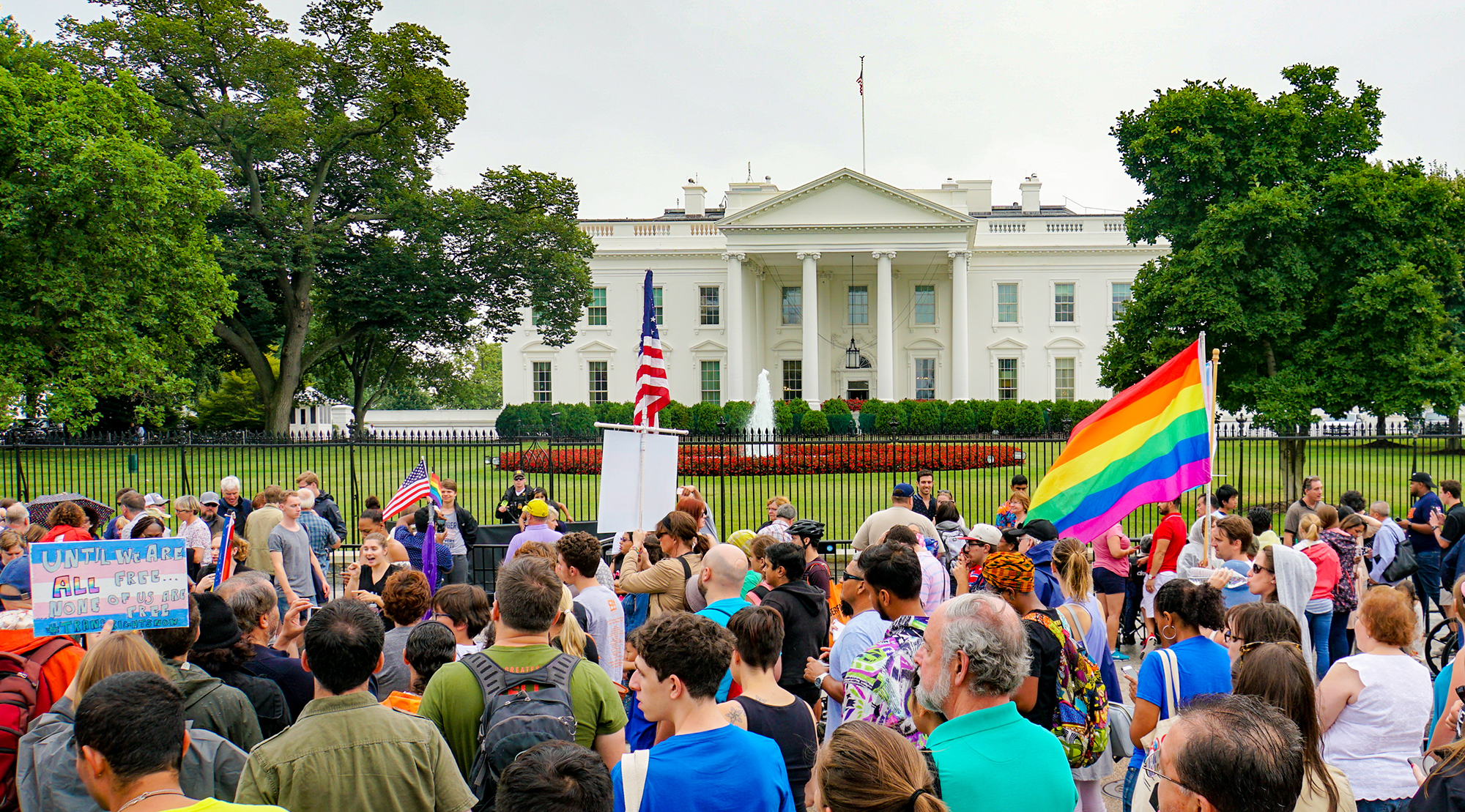
13. **The Legislative Arena: State-Level Bans and the “Save Women’s Sports Act”**
Beyond the rulings of international sports federations, the debate over transgender athletes has increasingly moved into the legislative arena, particularly at the state level in the United States. This trend is exemplified by the passage of laws like Texas’s “Save Women’s Sports Act” in June 2023. This legislation explicitly bans transgender athletes from competing in girls’ and women’s sports, permitting students to compete only in the gender category listed on their birth certificates, with exceptions only for clerical errors.
Such laws represent a significant and growing legislative effort across the country. The context reveals that “hundreds of bills have been introduced to restrict transgender people’s access not only to sports but to health care,” indicating a broader political movement. These legislative interventions are often championed by conservative politicians who, despite sometimes having no prior record of supporting women’s sports, have moralized about the sanctity of collegiate women’s swimming and other female categories.
Critics of these laws argue that they disproportionately target transgender individuals, limiting their participation in activities central to their identities and well-being. These legislative actions create a complex legal and social landscape for transgender athletes, adding another layer of challenge to their pursuit of competitive opportunities and further polarizing the discussion around fairness and inclusion in sports.
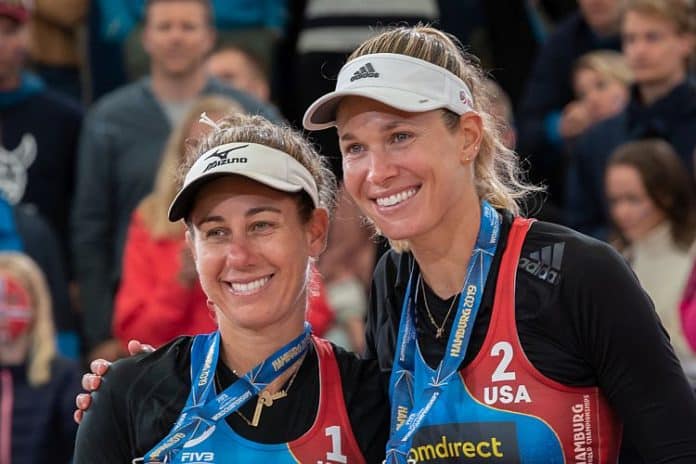
14. **The Pursuit of Balance: Charting a Path for Inclusivity in Sports**
The ongoing saga surrounding Lia Thomas and the broader debate on transgender athletes underscores a profound challenge for the world of sports: how to balance the fundamental principles of fair competition with the imperative of inclusivity and human rights. As Robin Harris, executive director of the Ivy League athletic conference, succinctly put it, “the question of women in sport has become a culture war,” reflecting the deeply polarized nature of public opinion and policy decisions.
This isn’t just a legal or scientific debate; it’s a societal one about defining lines and who holds the authority to set them. While the division of sports into men’s and women’s categories serves a crucial purpose—allowing female athletes to be considered on their own terms and to celebrate achievements that might otherwise be overshadowed—the process of establishing and enforcing eligibility criteria for transgender individuals remains fraught with contention. The call for “fair, inclusive rules that don’t penalize athletes for their gender identity” resonates among advocates, emphasizing that athletic opportunities are central to individuals’ identities and human dignity.
Ultimately, the path forward demands a nuanced and empathetic approach, grounded in robust research and a commitment to human rights. It requires sports organizations to continuously evaluate their policies, ensuring they promote fairness, respect, and equal opportunities for all athletes, regardless of gender. As the sporting world continues to grapple with these complex issues, the enduring quest for a truly balanced and inclusive environment will remain a critical undertaking, shaping the future of competition for generations to come.


